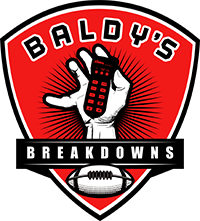
The Anatomy of a Touchdown: Lessons from the Field to the Force
When Baker Mayfield’s pinpoint pass met Cade Otton’s swift hands in the end zone, it echoed far beyond the confines of Raymond James Stadium. To the untrained eye, it was merely a brilliant football play. But to those in law enforcement, this play offers more than meets the eye. It’s an encapsulation of key principles pertinent to both the gridiron and the frontline—the art of precision, coordination, foresight, and swift execution.
The Blueprint of Success: Preparation Meets Opportunity
In law enforcement, and similarly in football, preparation defines the line between triumph and defeat. Before Mayfield even took his position behind the center, hours, days, and weeks of practice had been meticulously invested to perfect these moments. The play was not just born on the sidelines; it evolved through exhaustive rehearsals, discussions, and mental simulations.
Preparation in policing is strikingly similar. Whether officers are advancing through situational training modules or planning real-time operations, everything hinges on anticipating scenarios, contextual understanding, and having a well-crafted, adaptable plan. This means comprehensively understanding the playbook or tactical approaches and memorizing routes, positions, and roles, ensuring each team member acts in concert with the rest. That strategic cohesion allows both players and officers to execute flawlessly under pressure, transforming planning into real-time success.
Decision-Making Under Pressure: The Quarterback’s Conundrum
Mayfield’s role epitomizes decision-making under duress, a scenario police officers face regularly. As the defensive linemen closed in like a brewing storm, Mayfield’s split-second choices could make or break the moment. Approach it right, and the pass leads into the history books; falter, and adversaries seize the chance.
In law enforcement, rapid judgment calls occur with potentially higher stakes. Officers’ decision-making processes are sharpened during simulations, ride-alongs, and on-the-job experience. Just as the quarterback reads opposing defenses to adjust the play, officers assess evolving threats, adjusting tactics instantaneously. It’s about evaluating risk, gauging intent, and channeling initiative, often summed up as the ‘art of the tackle’ in the field.
Coordination and Communication: The Team Dynamics
Much like the offense unit leaving an indelible mark with that touchdown,police operations revolve around seamless coordination. Each player, like each officer, fulfills a critical role within the choreography. Otton’s synchronization in awning his routes and correctly interpreting Mayfield’s signals showcases intricate team dynamics built on trust and communication.
Successful operations demand officers orchestrate movements, balancing assertiveness with dexterity—a cornerstone mirrored as Mayfield navigates offensive plays, linking verbal calls to Otton’s laser-focused route running. Law enforcement’s own positive outcomes stem from each officer maintaining open lines both over the radio headset and implicitly through ground interpretation. These two sectors share fidelity to upholding meticulous, channel-forged communications, urging troopers and tight ends alike to cover one another and prospectively counter adversarial advances.
Adaptability and Learning from the Unexpected
For Mayfield and Otton, contingencies call forth because the “other team’s reaction” can flip the situation in less than a heartbeat. Preparation may prime scenarios, but adaptability maintains continuity in abrupt changes. As is the case for police, encountering incident anomalies—the unexpected—requires sensory acumen to nimbly navigate gray zones not mapped in manuals.
In Baldy’s Breakdowns view here, we see complexity can manifest quickly, resulting in learning for the perpetual betterment of everyone from recruits on foot patrol to strategists at a whiteboard. Training curves mimic the evolution akin to rigorous coaching critique, multimedia consultations, and even sharing tapes to derive minute, perceptual learning—approaches that police forces have long embraced as systemic evolution rather than gradual downtime.
Call to Action: A Cohesive Power
As illustrative as this sports moment is, underscoring ethical values sharing spirit can forge officer-trained captains and vice versa in partnering societal heroes at meaningful capacity. Exploration and comprehensive toolbox assembling leans on the sports domain highlighted profoundly on digital channels like “Baldy’s Breakdowns”.
Delve into breakdown discussions here and engage on broader points of honor and tactical dialogues via our Facebook thread. Subscribe to our growing community on this channel for regular dispatches about honing advances drawing influence akin to dazzling blitz-like, deep pass exchanges, which invigorate service unity like glorious slant corners.
Football and frontline operations serve an opportune intersection bridged by mutual understanding—activating everyday tenacity and observational efficiency, sustaining polished teamwork that shines brilliantly whether in jerseys or uniforms embracing duty and challenges head front. Courage may commence successes recognized across all viewing points—and enrich life-wide pursuit of assured alliances over differing disciplines.
